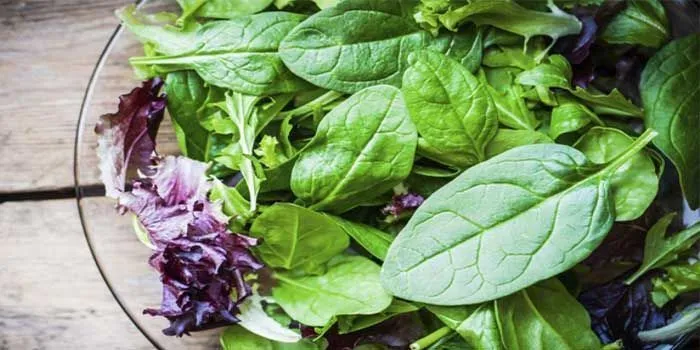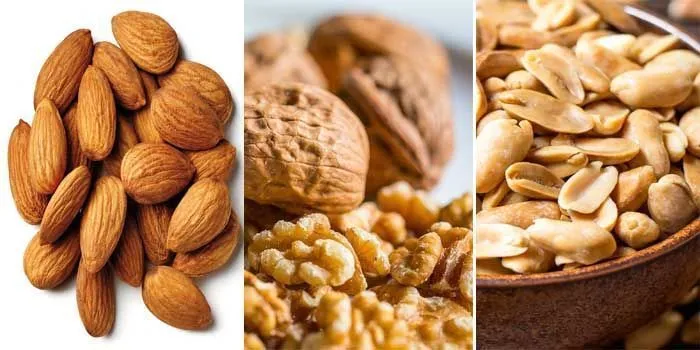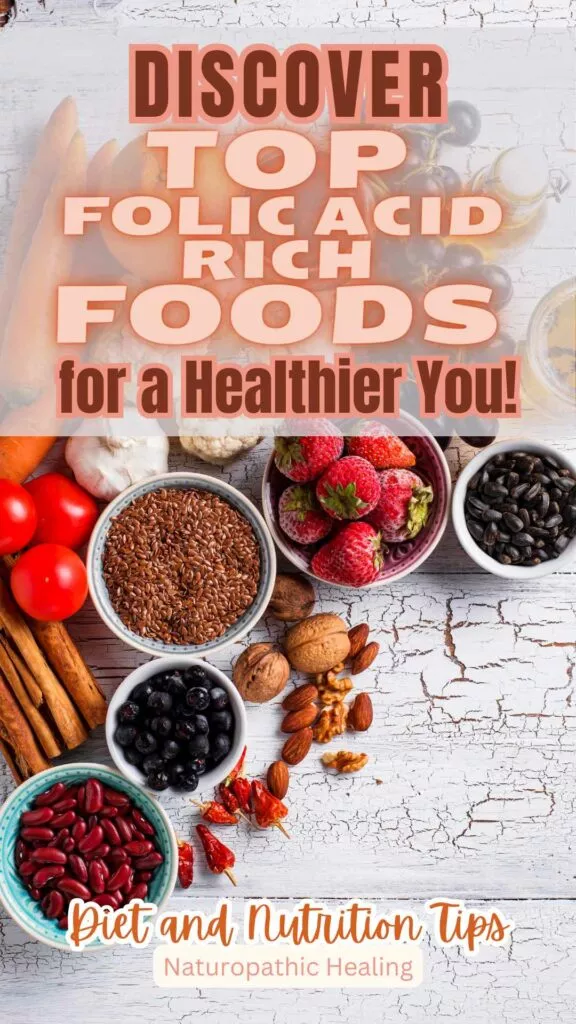More and more we can find in pharmacies and specialized stores vitamin supplements. The reality is that its consumption is only founded when there is a real problem of metabolization or lack of consumption of any of the vitamins.
This is because if we eat a healthy diet and in necessary quantities, we can introduce into our body each and every one of the minerals and vitamin groups it needs. Increasing concentration on food supplements will only cause our body to discard them through urine and can become counterproductive.
What is necessary is to increase consumer information with the list of foods with more folic acid and other vitamins. As they always say, in the balance is health and we see it day by day with the positive feedback that the Mediterranean diet receives and the habitual consumption of all kinds of vegetables, fruits, meats, and fish.
Table of Contents
What is Folic Acid?
When we hear or read about folic acid, it may lead to confusion, since it is a type of vitamin B9 essential for our body, but sometimes confused with folate.
Folate, also named vitamin B9, is a water-soluble vitamin with essential functions in our body.
Its activity on our cerupe is to promote cell division and stimulate growth and development from the initial stage in the fetus. [Study]
This folate can be found in a wide variety of foods of diverse natures, as we will unravel below.
The recommended daily amount of folic acid or vitamin B9 is 400 mg a day for an average adult, something that can only be achieved with the consumption of a wide variety of foods and a balanced diet.
We do not have a particular group of foods with more folic acid, as it happens for other vitamins, whose origin is almost limited to meat. In this case, we can find it in vegetables, meats, eggs, legumes, and a long etcetera.
You may be interested in our article about the 10 most interesting zinc foods
List of Foods With More Folic Acid

1- Legumes
Among all legumes belonging to the Fabaceae family (Fabaceae), we find all kinds of products such as peas, lentils, soy, etc.
Most of these foods contain a significant concentration of folic acid and are a good source of folate.
Many of them, such as beans, provide with less than 200 grams almost 33% of the recommended daily amounts. Others, such as lentils, can reach 90% of the daily amount with less than 200 grams.
In addition to that, with legumes, we also obtain a good concentration of fiber, vegetable proteins, antioxidants, and minerals (potassium, iron, magnesium, and a long etcetera).
2- Citrus
In general, we classify lemons, oranges, mandarins, grapefruits, limes and the occasional exotic fruit within citrus fruits. Among all of them, easy to consume, we obtain a good source of folic acid.
To put ourselves in a situation, when taking a medium-large orange, we consume about 55 mg of folate, which represents almost 15% of the recommended daily amounts (and more than 100% of vitamin C). [ADDITIONAL INFORMATION]
Undoubtedly, the World Health Organization promotes the consumption of all kinds of vegetables to complete the daily amount of vitamins and antioxidants that we need and that manage to prevent important diseases in our body (such as cancer).
3- Eggs
Eggs are indispensable food to increase the concentration of proteins in our body. In addition, it is already proven that they do not increase bad cholesterol in our body, so it is a healthy ingredient that it enters foods with more folic acid.
Although its concentration in folic acid is slightly lower than others, each egg provides 6% of the recommended daily amount of vitamin B9, not negligible if we usually take eggs for dinner in the form of omelets.
In addition, eggs are an important source of vitamin B12 (11% RDA), pantothenic acid (7% RDA), and riboflavin (14% RDA). [Information]
4- Green leafy vegetables

Green leafy vegetables contain countless vitamins and minerals highly concentrate and must be a mandatory part of our diet.
Vegetables such as spinach, turmeric, lettuce, or kale, even having very few calories and almost no fat, is at the top of the foods with more folic acid.
For example, a serving of 30 grams of spinach provides almost 60 mg of folic acid, or what has been 15% of the recommended daily amount.
In turn, they also provide large amounts of minerals such as potassium, calcium or magnesium, vitamin A, and a lot of fiber.
More and more scientific trials are emerging where they demonstrate the importance of the consumption of green leafy vegetables to reduce inflammatory processes, diabetes or even cancer. [Study]
5- Beetroot
Beetroot is a real bomb in antioxidants and polyphenols. Its high nitrate content has also been associated with the ability to reduce high blood pressure. [Study]
As for foods with more folic acid, a medium-sized beet provides almost 150 mg of folate, resulting in 22% of the recommended daily amount.
In addition, it provides 7% of vitamin C. For the rest of the vitamins, the amount provided is not very important (less than 2% of riboflavin, niacin, thiamine, etc.)
One of the minerals that provide the most is manganese, where a medium-sized beet (80 grams), provides 13% of the recommended daily amount (0.3 mg).
6- Asparagus
Asparagus contains a high amount of fiber and antioxidants with anti-inflammatory and antimicrobial properties.
Among other minerals and vitamins, the folate it contains for a serving of 90 grams (6 asparagus) is 134 mg, almost 35% of the recommended daily amount.
However, it does not fall short with the contribution of other vitamins since, for example, the previous amount consumed is 18% of vitamin A, 12% of vitamin C, or 57% of vitamin K.
Asparagus becomes a great food with healthy properties for the body that we should not waste.
7- Brussels sprouts
In general, all kinds of brassicas, such as Brussels sprouts, cauliflower, or broccoli, contribute a high compendium of fiber, minerals, and highly concentrated vitamins.
Whether prepared from the different forms of consumption (cooked, steamed, oven, etc.), Brussels sprouts enter the food with more folic acid, since for each cabbage ingested (approximately 20 grams), we provide the body with 3% of the necessary folate, and of course, when taking it we take more than one Brussels sprout.
In addition to folic acid, Brussels sprouts also provide us with a very high source of vitamin K (37% of the RDA for each cabbage), a large assortment of minerals, and fiber.
Something that we can not forget is the presence in this food of the antioxidant kaempferol, associated with numerous health benefits. [Study]
8- Nuts and other seeds

Nuts give us a lot of energy (they are high in healthy calories), proteins, and mineral groups.
However, they are also at the top of the foods with the most folic acid. Walnuts, for example, provide per serving (30 grams) 28 mg of folate, which represents 7% of the recommended daily amount.
As we said in the article about the properties of walnuts, it is advisable to consume daily (maximum a serving of 3 or 4 nuts or 30 grams) of this and other nuts.
In turn, walnuts provide us with 6% of the RDA of thiamine, 22& of the RDA of copper, 48& of manganese, and 8% of fiber. On the other hand, we should not discredit others seeds such as flax, almonds, or hazelnuts, with very high amounts of vitamins, minerals, and fiber.
You may be interested in our article about What are the properties of walnuts?
9- Liver and meat in general
The liver is a very high source of iron, but there are also vitamins present in meats and, especially in the organs.
In fact, it is among the foods with the most folic acid, where a serving of 68 grams (a small fillet) provides 172 mg (43% of the recommended daily amount).
We also have a very high concentration of riboflavin (137% RDA), vitamin B6 (35% RDA), vitamin B12 (800% RDA), and minerals, especially copper, zinc, and iron.
Generally, meat is used as a high protein intake. However, it must be supplemented in a mandatory way with vegetables, since it does not contain any fiber and hardly contains vitamins C, D, E, or K.
10- Wheat germ
There is currently a wide variety of cereals, such as wheat, with a high contribution of fiber, minerals, and, of course, folates.
Specifically, the wheat germ, which we can buy in many supermarkets, a serving of 115 grams provides 323 mg of folate, about 80% of the recommended daily amount.
In turn, it also provides high concentrations of a wide variety of vitamins, such as thiamine (144% RDA), niacin (39% RDA), and vitamin B6 (75% RDA).
We should never discredit the high fiber intake of wheat germ and other cereals. In this specific case, a single cup of 115 grams provides more than 60% of the daily fiber needs.
11- Broccoli
Broccoli, like other vegetables of the genus of the brassicas, is a bomb of vitamins, fiber and minerals that we must introduce into our diet.
Normally cooked we can take half of the broccoli (about 150-200 grams), so with 95 mg per serving, it enters the top 10 of the foods with more folic acid.
However, we must also count a very high concentration of vitamin k (192% RDA), vitamin C (224% RDA), and vitamin A (19% RDA), among others.
In fiber, it also provides 3.9 grams per serving (16% RDA), and a balanced balance of minerals where manganese also stands out (16% RDA).
In addition to the nutritional components, you also have to count on the phytocompounds that activate the body, such as sulforaphane, with properties that are currently being investigated by the scientific community in relation to cancer prevention. [Study]
12- Papaya, bananas, and avocado
Finally, we move on to the list of fruits that are within the foods with more folic acid.
Among all the fruits, we have to highlight the avocado, bananas, and papaya.
Starting with the papaya, a normal-sized piece provides 116 mg of folate, representing 29% of the recommended daily amount.
In the case of plantain, one piece, in addition to the high potassium intake, contains 23.6 mg (6% RDA).
Finally, the avocado, with great medicinal properties for its unsaturated fatty acids, provides 163 mg of folate (41% of the recommended daily amount). Its use is becoming increasingly international.
It can be used in salads, toast, for the preparation of sauces (guacamole), etc.
You may be interested in our article about 7 scientific evidence of the properties of banana
Difference Between Folic Acid and Folate
Although we have talked about foods with more folic acid, there are differences between the concept of folic acid and folate as such.
Something that many people may wonder at this point in the article dedicated to folate is its difference from folic acid.
It turns out that although they are very related, they are not the same, but belong to different forms of vitamin B9 that we can assimilate.
It is very common to treat them equally and many times no differences are established when creating a nutritional table of different foods.
Folate
Folate is the active form of vitamin B9, scientifically known as levomefolic acid or 5-methyltetrahydrofolate (5-MTHF).
Once we ingest folate, the digestive system is responsible for transforming it into 5-MTHF before passing it into the bloodstream.
Folic acid
A folic acid is a synthetic form of vitamin B9, also known in scientific jargon as pteroylmonoglutamic acid. However, today and among the general public, folic acid is similar to folate, so we have talked about foods with more folic acid.
It is very common to see the concept of folic acid in processed food supplements. However, in natural foods, the amount of folate is of interest.
For many years, it was thought that folic acid was assimilated quite a bit better than folate. However, a diet containing a variety of folate-rich whole foods has proven to be almost as effective. [Study]
Supplements to Replace Foods With More Folic Acid
Increasing your intake of folic acid, also known as folate, can be important for various reasons, such as supporting cell division and growth, preventing certain birth defects during pregnancy, and reducing the risk of heart disease. If you’re looking to boost your folic acid intake through supplements rather than solely relying on foods, here are some options:
- Folic Acid Supplements: The most straightforward option is to take folic acid supplements. These are available over the counter in various dosages. It’s essential to follow the recommended dosage and consult with a healthcare provider before starting any new supplement regimen.
- Multivitamins: Many multivitamin supplements contain folic acid along with other essential vitamins and minerals. Choosing a multivitamin with adequate folic acid content can help ensure you meet your daily requirements.
- Folate-Rich B Complex Supplements: B complex supplements typically contain a combination of B vitamins, including folic acid (vitamin B9). This can be a convenient way to increase your folic acid intake along with other B vitamins.
- Prenatal Vitamins: Prenatal vitamins are specifically formulated for pregnant women and usually contain higher doses of folic acid to support fetal development and prevent birth defects. Even if you’re not pregnant, you can still take prenatal vitamins to increase your folic acid intake.
- Nervous system support supplement: contains one 250 count bottle of Nature Made Folic Acid 400 mcg (665 mcg DFE) Tablets for a 250-day supply
Do you know other foods with more folic acid benefits for the body?
If this post about Top 12 Folic Acid-Rich Foods for Your Health and Well-Being was helpful, please share it:



